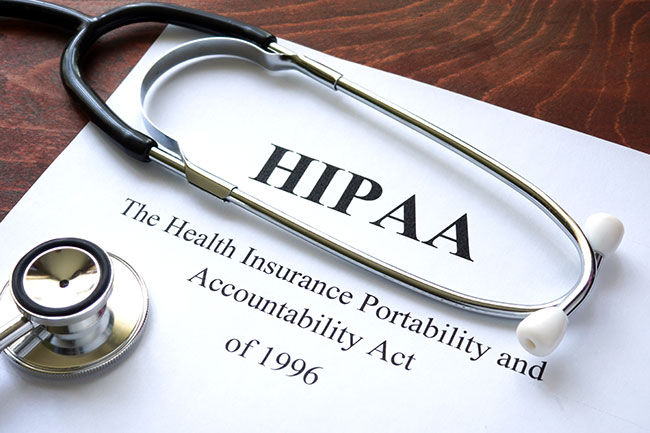You probably know that you can serve digital ads to users in a small radius with Facebook, Google, and other pay-per-click platforms. The umbrella term for the tactic is geotargeting. But did you know you can target users in a specific building? It’s true. It’s called geofencing. Most of the time, networks like Google’s Display Network, Facebook, and programmatic advertising offer better reach and end-user engagement. However, there are cases when geofencing is a good complementary tactic. Here’s how geofencing works, its pros, its cons, and how healthcare marketers can put it to use.
How it Works
Geofencing is made possible by vendor networks. A company will buy space with thousands and thousands of apps. The company pays the owners of the app for permission to install a piece of tracking code called an ‘SDK’ on the app. The SDK shares user information with the vendor. Since many apps require location sharing, the vendor can then use that data to serve advertisements in the app itself.
Vendors create vast networks in this way. The networks are so large that it is very likely that any given user has an in-network app on their device. With most digital campaigns, localization of campaigns is done to within a 1-mile radius of a dropped pin or address.
The Pros
- Geofencing is cheap.
The CPMs for these campaigns are low. They’re only a few dollars above the typical CPM for the Google Display Network, which is one of the least expensive ways to earn mass digital exposure.
- Geofencing is targeted.
Targeting such a small location cuts back on waste because you only serve impressions in an area where your audience congregates.
- Geofencing has great attribution capabilities
“Conversion Zones” can be set up with this tactic, so that you can see which users who have clicked on your ad end up showing up at later points of interest.
The Cons
- It’s kind of sneaky, when you think about it
Good brands are founded on trust. Invading a user’s browsing experience by advertising with the help of surreptitious data collection may feel a little below board to some users. It’s probably a good idea to make geofencing creative feel like part of a bigger campaign. Avoid making inferences about a user’s location unless you have something immediately valuable to provide them.
- It’s app advertising
We’re not the biggest fans of in-app advertising. From our experience, engagement rates from app traffic are not great. We opt out of targeting app users in most of our campaigns for this reason. That doesn’t mean in-app advertising is useless. It means you that you either need to offer something immediately valuable or be content with low-cost brand exposure.
How Healthcare Companies Can Use Geofencing
Geofencing Medical Offices (DTC Pharma Advertising)
The most obvious application of geofencing in healthcare advertising is using it to target specialty offices for pharma brands.
Until medical offices start offering McDonald’s-style ball pits—and we’re all praying that they do—apps are probably the most entertaining way to kill time while waiting to see a doctor. This is one of the few times when app advertising is probably better than the alternatives. Moreover, it’s a less expensive option than point-of-care TV ads.
While geofencing is certainly lower impact than point-of-care TV ads, the impressions you earn will have the same proximity to treatment discussions.
To make sure the HCP also has your brand at his or her fingertips, consider running a concurrent Epocrates product monograph campaign. As long as your messaging is well-researched, targeting offices that are high decile prescribers of competitor brands in this way can make a lot of sense.
The Caveat With Geofencing Medical Offices
Now, you’re probably thinking “This can’t be HIPAA compliant”. It’s a grey area, but it is allowed—there’s just some extra steps you have to take. Geofencing is HIPAA-compliant in so far as it doesn’t target people based on their personal health information. It only uses their location.
However, because serving ads to users after they’ve left the geofenced area could be equated to targeting users based on personal health information (since location is no longer a factor in their targeting), many vendors won’t geofence medical offices. This is because those vendors don’t employ active GPS calling.
In simple terms, active GPS calling ensures that the data you’re using to serve the ad is fresh because it is verified by satellites (rather than less reliable cell phone and mobile-tower triangulation).
Vendors who offer active GPS calling will are able to guarantee that ads are only served during office visits. Doing this avoids using old data to target users (meaning they might not be in the office) and is therefore compliant (so long as you only target based on location).
Geofencing HCP Conferences (Pharma Advertising)
This scenario might be one where you could generate decent engagement from geofencing. The idea would be geofence the conference buildings and participating hotels. The campaign’s banners could direct users to a social media page that promotes discussions about the conference, treatment guidelines, KOL speaking moments, or booth locations.
Focusing the campaign on creating discussions rather than selling a product in the banner’s subject lines should be enough to avoid indignation on the audience’s behalf. Still, geofencing in this case would be a complement to a campaign with higher volume potential, like a geotargeted Facebook or LinkedIn campaign.
Recruiting for Healthcare Companies
Recruiting healthcare personnel likes nurses, techs, and other healthcare workers is another potential use for geofencing. If you’ve covered your recruitment marketing bases and are still not seeing the results you want, geofencing competitor locations like hospitals is an option.
Unlike marketing medical products, you can actually use other targeting factors to eliminate wasted impressions. Dwell time is a relevant factor for recruitment marketing: you can specify that you only want to target users who have been in the building for over four hours. Using this targeting method makes it much less likely that you will be hitting patients rather than staff. Since you’re not targeting a sensitive privacy category like medical history, the HIPAA restrictions that we talked about in the ‘Geofencing Medical Offices’ section don’t apply.
Building Awareness Among Specific Audiences
Using geofencing to target specific neighborhoods or buildings over prolonged periods of time makes sense for this tactic’s brand awareness function. For example, a campaign that targets Spanish supermarkets throughout the year could be a way to earn exposure with Hispanic audiences. Another possibility is a campaign that targets wealthy neighborhoods near plastic surgery offices.
The Future of Geofencing
The app market is growing, so the potential reach of these campaigns should grow as well. However, there is a growing movement to restrict the collection of personal data that makes geolocation possible. The CCPA is the primary example for this. If other states adopt measures that cut back on data brokers’ power, then tactics like geofencing will lose so much reach that they’re no longer viable.Right now, however, this tactic is great way to earn exposure in very specific locations. For larger target areas, programmatic display campaigns are still the better option. If you want to talk about your brand’s specific needs, then we encourage you to fill out the form on this page. Find out how bfw Life Sciences can help your brand thrive!

